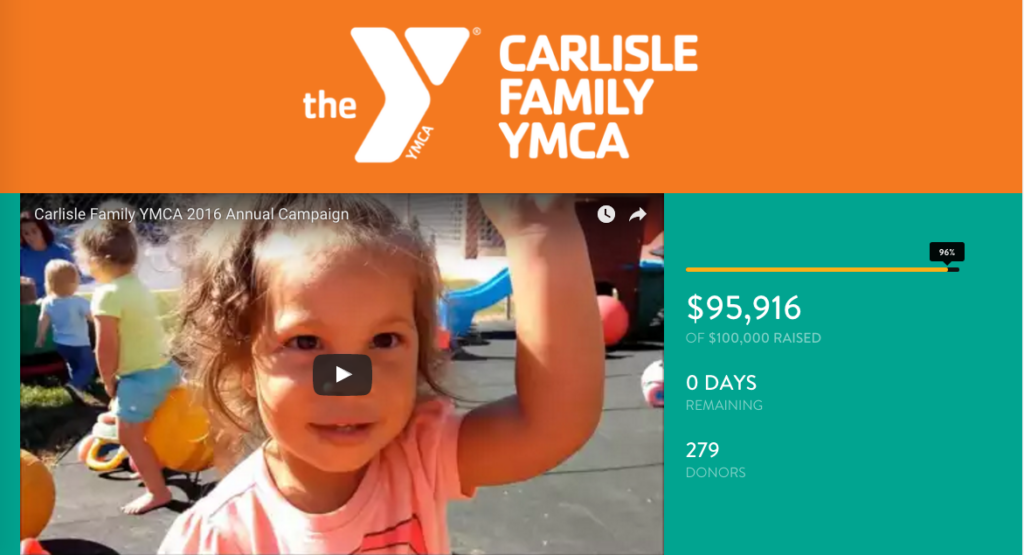You’ve decided to run a peer-to-peer fundraising campaign because you know it’s a great way to increase your prospective donor base, engage your supporters, and share your campaign beyond your current network.
After finalizing the details, including your campaign theme, goal, and timeframe, you’ve created the main website and you’re ready to roll! But there’s a step missing here—you have to recruit peer-to-peer fundraisers before you kick off the campaign.
After seeing thousands of peer-to-peer fundraising campaign, we at CauseVox know it’s best to start recruiting fundraisers early in the process. In fact, finding people to fundraise on behalf of your organization should be at the very top of your to-do list.
Think of your peer-to-peer fundraisers as the fuel for your vehicle. You simply can’t get where you need to be without them!
Here are 6 ways to recruit peer-to-peer fundraisers for your upcoming campaign.
“Here are 6 ways to recruit peer-to-peer fundraisers for your upcoming campaign.” tweet this
1. Start With Your Most Loyal Supporters

Who do you go to for guidance when making a big decision such as a change in budgeting, staffing, or strategic plan point? In most cases, the people serving on your Board of Directors act as both your organization’s governing body and your biggest supporters.
We believe that when planning a peer-to-peer fundraiser, it’s always best to start recruiting board members first since they are the ones who know your cause and goals best.
The Carlisle Family YMCA ran a textbook peer-to-peer fundraising campaign to compliment their annual campaign, and the first group of people they recruited to become fundraisers was their board. With the help of these devoted individuals, they raised $10,000 more than the previous year during the campaign.

If there’s an upcoming board meeting (planned before the campaign kicks off) then discuss the opportunity then. Come prepared with campaign-related information for board members to browse. If the next meeting’s timing isn’t on your side, set aside an hour or two to call each person to ask if they’re willing to participate.
2. Current Donors

Your current donors are another great pool of prospective peer-to-peer fundraisers. You know they already see value in your organization because they were generous enough to make a donation, so now you have to convince them to take their support and engagement to the next level.
But don’t just reach out to your major donors. Remember that many donors giving average or even lower-than-average gifts (such as those falling into the Millennial demographic) are just as able to devote their time to the campaign as your bigger donors.
Contact your donors through their preferred method of communication, informing them of the campaign and the option to become a bigger, more engaged participant.
3. Social Media

Chances are, you’re connected with a vast network of supporters across your social media platforms.
Some are most likely acquaintances interested in your cause but not ready/able to give, while others are your most dedicated volunteers, advocates, and even clients that stay connected with your organization through social media.
Because social media captures not just your loyal supporters but also those just starting to learn about your cause, it’s a great outlet to reach those who may not otherwise learn about your campaign.
Start recruiting peer-to-peer fundraisers from social media a few weeks in advance of the big day. Continue making posts regarding the campaign and the opportunity to fundraise during kickoff and throughout the campaign.
“Start recruiting peer-to-peer fundraisers from social media a few weeks in advance of the big day.” tweet this
Remember, it’s never too late for them to participate!
4. Email

There are a number of nonprofits and charities that rely on email marketing to send out newsletters, fundraising blasts, and other correspondence.
As you know, some of your volunteers, service recipients, and other supporters aren’t on your donor or board lists, or on social media, so it’s important that they’re somehow kept in the loop.
Send out an email to your contacts detailing the upcoming campaign and asking for eager fundraisers to participate. Provide a direct link to the site to create a fundraising page or the contact information of a staff person who can help them through the process.
5. Word of Mouth

You’re at the grocery store and you run into one of your favorite donors. Quick, what do you do?
After some polite conversation, you’re likely to bring up the upcoming peer-to-peer fundraising campaign. Let them know how excited you are, the results you anticipate, and what you hope to accomplish with the funds raised.
Encourage them to participate and spread the word themselves to their own friends, family, and fellow donors.
To be on the safe side, keep a business card or possibly even a small flyer with campaign information with you that you can give to potential fundraisers, even when you’re recruiting “on the fly.”
6. Phone Calls

Today, so much of the typical donor to nonprofit experience occurs online, which is one of the reasons why a phone call means so much. We bet your supporters will be pleasantly surprised when they pick up the phone and hear that you think they’d be “the best fundraiser for the job.”
If you have the time (or eager volunteers), pick up the phone and give your prospective peer-to-peer fundraisers a call. Answer any questions they have and direct them to the website to begin setting up the campaign.
Don’t forget, once you’ve recruited your fundraisers, you need to get them set up and ready to raise money. We encourage you to create a toolkit to help prepare and guide your volunteer peer-to-peer fundraisers through the campaign.
To provide enough structure and guidance, include the following in the toolkit:
- Information on the campaign theme, goal, timeframe
- Tips for creating their own webpage, including a step-by-step guide
- Suggestions for personal goals
- Storytelling prompts
- Sample social media and email sharing messages
- Examples of complete, acceptable personal fundraising pages
- Contact information for a technical support person and someone from your organization
During the recruitment process, you’ll have people giving you an enthusiastic “Yes! Of course, I’m on board!” and others who’ll be in the “Maybe next time” camp. Avoid pressuring those who are hesitant. If you gave them the opportunity and they didn’t jump, then try again next time. Just don’t forget to let them know when and how they can give once the campaign begins!
You can have the best-planned, creative peer-to-peer fundraiser planned, but the power in this type of fundraiser lies not with your organization, but with those that fundraise for you.
“The power in peer-to-peer fundraising lies not with your nonprofit, but with those that fundraise for you.” tweet this
Spend time using all your resources to recruit a group of eager supporters ready to elevate your fundraising efforts to the next level.
To get started on your own peer-to-peer fundraiser, check out our Ultimate Guide To Peer-To-Peer Fundraising. Learn more about coaching personal fundraisers here.




